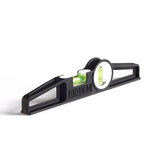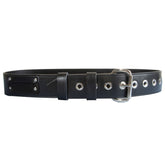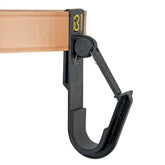Ahh, Hollywood. A place which revolutionised the art of movies, romanticised the idea of fame, and gave ‘ordinary’ people the platform to be idolised by millions worldwide.

Hollywood is often portrayed as a glittering façade where dreams come true, but it’s easy to overlook the countless crew members working behind the scenes who have shaped and sustained that glamorous image.
As actor James McAvoy put it best, [1]“Filmmaking is a miracle of collaboration.”
What place does the U.K. have in Film & TV?
The U.K. is home to over [2]16,000 film and production companies. In 2022, film production spending reached a total of £1.97 billion, leading to the creation of 220 films that year.
Furthermore, it has been estimated that the U.K. film industry is expected to expand at a growth rate of 4% between 2022 and 2026, bringing £12.6 billion to the U.K. economy.
While the U.S. and India have long been powerhouses for producing global mega stars and blockbuster movies, the U.K. is quickly emerging as a major film tourism destination in its own right. Two-thirds of tourists said British filming locations and landmarks influenced their decision to visit.

The likes of Harry Potter, Doctor Who, Downton Abbey, James Bond, The Crown, and Peaky Blinders have earned the U.K. a place as a leader within the sector, becoming the second largest exporter of television programming, fourth largest exporter of film globally, and a leading producer of visual effects (VFX).
Sometimes, Terrible Accidents Lead to Legislation Being Put into Place…
Health and safety are paramount (excuse the movie pun…) to all industries and every job.
It’s the undeniable truth that laws, procedures, and regulations are often only put in place after accidents or tragedies occur.
For example, on [3]April of 1978, the deadliest construction accident in U.S history resulted in the deaths of [4]51 labourers. During the construction of The Pleasant’s PowerStation in West Virginia, it was decided that instead of the conventional way of building the scaffold from the ground up, the scaffold was instead anchored to the side of the building and attached by concrete that was poured the previous day.
The scaffold's height increased just as the building did and grew at a rate of 1.5m (4ft) per day.
On the morning in question, the concrete, which had been poured just [5]20 hours earlier, had not been given enough time to cure, along with this, the poor design of the scaffold and large loads that were incompatible with its strength, caused the supports to pull loose from the walls, sending large bits of concrete tumbling towards workers below.
The scaffold became loose and broke apart, sending all 51 workers who were on the scaffold at that time tumbling 170 feet below. There were no survivors.
Pictured: Image depicting the (left) conventional scaffolding compared to how (right) the workers built The Pleasant’s PowerStation. Picture Credit: YouTube, The Willow Island Disaster – A Short Documentary by Fascinating Horror.
This disaster brought significant attention to the industry, shedding light on its inherent risks and the critical mistakes that can trigger such devastating outcomes.
In response, new regulations were introduced, including mandatory concrete testing before formwork removal and the requirement for comprehensive construction and safety plans.
These plans must now be carefully prepared in advance and reviewed by specialists before any work starts.
Tragedy Changes Safety Regulations Worldwide
In Jiangxi, China, in 2016, work commenced to build the Fengcheng Power Plant, two [6]1,000-megawatt coal-fired facilities that were to be completed by 2018. However, the top layer of concrete in the tower began to crumble and fall, pulling the steel piping with it.
Due to this, the scaffold holding the platform detached, causing the deaths of 74 workers, many of whom were under the age of [7]36.
During its investigation, it was also concluded that poor management and a rushed schedule also contributed to the tragedy. The impact of this incident spurred tougher safety regulations in China, with extensive inspections instituted at worksites to stop events like this from ever happening again.
How Accidents & Fatalities Have Changed the Laws in Film & TV
Although such disasters should never have had to be endured within the scaffolding and construction industries, it’s not uncommon for such incidents to occur in areas like Film & TV. As with the above, when these tragedies do occur, they highlight areas that should have been safeguarded from the very start.
In [8]1928, during the production of a major blockbuster, several people were injured, three fatally, while filming a major scene.
Accidents on set don’t just affect the stars and extras; they can also impact the crew working behind the scenes, which can also generate the implementation of procedures and laws.
Brent Hershman, an assistant cameraman who was working on the set of the motion picture Pleasantville in [9]1997, had worked a combined 79 hours over five consecutive days. Due to exhaustion, Brent crashed his car into a utility pole after falling asleep at the wheel, ultimately killing him upon impact.
‘Brent’s Rule’ was created and passed by the Screen Actors Guild, which limited set days to 12 hours.
It’s not just people whose circumstances can change laws, but animals, too. During the making of The Charge of the Light Brigade in 1936, dozens of horses were killed while attempting certain stunts and jumps. In response, Hollywood adopted more stringent animal protection guidelines.
Scene from 'The Charge of Light', 1936, Picture Credit: IMDB
Set Equipment Can Cause Accidents too…
Crew equipment, such as loose wires, overheating electricals, or unstable surfaces, can be a catalyst for serious accidents or fatalities for those within the vicinity.
During the filming of Saratoga in [10]1937, actor Lionel Barrymore broke his hip after tripping on a cable while on set. Almost a decade before, a German shepherd dog film star named [11]Strongheart was accidentally burned after coming into contact with a hot studio light. The burn became tumorous, which sadly led to the animal’s death later that year.
The Wizard of Oz was no stranger to multiple rumours and controversies that plagued the movie, even decades after its release. Margaret Hamilton, who played the Wicked Witch of the West, suffered second-degree burns to her face and third-degree burns to her hand during her ‘vanishing’ scene when the pyrotechnic device went off too soon.
Image: Scene from 'The Wizard of Oz', 1939. Image Credit: Taken from slashfilm.com
Two actors who were playing the flying monkeys fell several feet to the ground when the wires that were holding them up suddenly snapped. Luckily, no one was seriously injured during the incident.
So Much Can Go Wrong on Set
In production, no two days are the same. In a fast-paced, busy, and demanding environment, things can go wrong, and mistakes can occur.
[12]Set construction involves countless hazards, especially in challenging conditions. Whether you’re a small-scale production company or a six-figure budget blockbuster, dangers are always possible.
- Manual handling can take a physical toll on an individual, especially for crew members who are carrying equipment, props, or pushing trolleys.
- Falls from height and falling objects are common hazards within this environment, with its fast-paced and long working days often blamed for such accidents.
- Injuries such as cuts and abrasions are not unusual, especially for those working with tools or moving heavy objects, where skin pinches and trapped fingers can occur.
- Exposure to harmful substances is possible when working behind the scenes. Certain locations used can contain dangerous materials such as asbestos, or workers can come into accidental contact with paints, oils, glues, and other harmful preservatives.
- Electric shocks or fires can have a devastating impact on equipment, locations, and those within the vicinity. Overloaded electrical appliances, a faulty socket, or a fallen lighting rig can lead to horrifying results, so it’s important to assess and safeguard these risks beforehand to avoid such accidents from happening.

Our Top 6 Equipment That You Need on Set
At Leach’s, we offer over 5,000 carefully designed products, each focused on delivering safety and reliability, no matter the industry, the scale of the project, or the demands of the job.
When it comes to Film & TV, we have a wide collection of supplies that will not only support you and your crew through meticulous tasks, long days, and challenging environments, but keep you safe and secure, no matter how big or small the job may be.
We supply:
- Scaffolding Consumables
- Film Crew PPE (Personal Protective Equipment)
- Studio Set Building Safety
- Harness & Lanyards
- Studio Privacy & Acoustic Barriers
- Branded PPE & Workwear
From carabiners to guardrail systems, we have everything you need to make sure filming flows safely and securely, safeguarding everyone on set.
So, need a bit of inspo? Here’s our Top 6 Equipment that you need on set…
1. BIGBEN Deluxe 2 Point Safety Harness
Don't risk the fall! Working from height is a common part of working behind the scenes, especially when constructing sets.
Tested and approved for users up to 140kg, the BIGBEN Deluxe 2-point Safety Harness provides comfort, peace of mind, and security. The atrium rings help to maintain rotational flexibility, reducing rigidity for the user.
The fall indicators are displayed for inspection speed and convenience, with them easily located on the rear of the harness. Alongside this, the integral inspection record is also located on the rear of the harness. This makes it easy to access, especially for on-site access to inspection records.
Its intricate design includes elasticated legs and side webbing. This allows the user to have free range of movement with added durability. This is essential when working at height, as we understand that no two jobs are the same, and the need for flexibility is crucial.
The BIGBEN 2-point safety harness also features a rear anchorage strop located on the top left shoulder to allow for inertia reel use, keeping you safe and secure in any situation. The fully adjustable leg, chest, and shoulder straps are just one of the features of the harness. There are five separate buckle adjusters for compliant fitting and extreme comfort.
Click here to find out more about the BIGBEN Deluxe 2 Point Safety Harness.
The BIGBEN BIGGUY Deluxe Comfort Plus Padded 2 Point Quick Release Safety Harness contains a 2-point front & rear anchorage. Its fully adjustable leg and shoulder straps ensure you are safe and secure.
The comfort shoulder and leg pads are stitched securely into the harness to provide top comfort and support while you work, perfect for when the harness has to be worn for long hours.
This deluxe safety harness has been tested and approved for users up to 160 kg and conforms to EN361.
2. BIGBEN Sound Blocker Envirohedge Acoustic Barrier with Artificial Ivy Leaf
Filming on locations outside of a studio environment can sometimes mean that certain things can't necessarily be controlled. This can be highly challenging for everyone involved in the project. Uncontrolled noise pollution from nearby traffic, high population density, and unpredictable weather can all be demanding 'inconveniences' while filming.
The BIGBEN Sound Blocker Envirohedge Acoustic Barrier has been meticulously engineered to reduce noise on location by using cutting-edge manufacturing materials. These barriers have been designed to be lightweight and yet exceptionally robust, making them easy to install, transport, and store. Their durable design ensures a long lifespan, allowing them to be used again and again, while also massively promoting privacy for crew members and actors while filming commences or set construction takes place.
The artificial ivy leaves across the barriers create the illusion of a large, luscious hedge, which can help the BIGBEN Sound Blocker blend seamlessly into both bustling urban and picturesque rural environments.
If you want to see view the BIGBEN Sound Blocker Envirohedge Acoustic Barrier.
3. BIGBEN UltraTuff Gloves
Life on set needs to be kept as smoothly as possible, so to keep things moving, equipment and tools need to move, sets need to be reconstructed, altered, and prepped. Therefore, it's not unusual for hand injuries to occur, such as pinched skin, cuts, and bruises.
The BIGBEN UltraTuff Cut Level D Nitrile Grip Gloves are your go-to for ultimate protection and comfort. They’re so dexterous and well-fitting that you'll barely notice you’re wearing them, all while offering superior cut protection.
The BIGBEN UltraTuff Cut Level D gloves are designed with a new, double-dipped reinforced thumb crotch for added protection. This is especially crucial for scaffolders, as it's a common pinch point when handling scaffold tubes and boards.
They are cut-resistant, rated at Level D, which means they are ideal for handling sharp metal, exposed glass, and other hazards. They provide superb flexibility and control, making them a top choice for scaffolding and construction work. The gloves are also lightweight yet durable, excelling in wet and dry conditions, making them a year-round essential. Plus, they’re EN388:2016 Certified – 4X43D, so you know you’re getting top-quality safety.
Click here to view the BIGBEN UltraTuff Cut Level D Nitrile Grip Gloves.
4. 10 x Skyhook Cable Support
When cables aren’t stored safely, they quickly become one of the most common culprits behind on-set accidents.
Organising your cables properly helps prevent accidents, avoids damage to equipment, and keeps the whole set running smoothly, reducing the risk of accidents. Cables aren’t just a hazard while on the ground, but also those that hang from above.
Let us introduce the Skyhook, a very simple cable support system that is designed to be hung from scaffolding or another similar structure or screwed to a ceiling or wall.
It is highly flexible and holds any cables securely, promoting a safer environment.
What’s more, they are recyclable and reusable, allowing you to use them again and again, on every job.
To view our Skyhook Cable Support, click here.
5. BIGBEN UltraLite Vented Helmet
This top-of-the-line piece of equipment has several key features to ensure it delivers the ultimate protection for you and your team.
The UltraLite Safety Helmet meets both the EN12492 and EN397 Industrial Standards for superior shock absorption and penetration resistance. Its outer shell is made from high-density ABS plastic.
Along with this and its top and side impact certification, you can rest knowing it’s not only the top of your head that’s protected, but also the sides, should an accident occur. Thanks to its advanced internal moulding technology, the force of impact is evenly distributed, preventing the build-up of pressure in one area, which minimises injury risk while maintaining the helmet’s strength.
Alongside its durability, this is the lightest height safety helmet on the market, weighing only 417g, allowing you to work comfortably and efficiently, especially during long hours.
6. BIGBEN Sound Blocker Quilted Studio Absorption Blankets
Need ideal noise protection for your Film or TV set? The BIGBEN Sound Blocker Quilted Studio Blankets are the perfect solution for absorbing sound while filming commences.
Each one has been specifically engineered to include a double layer of quilted fibreglass, which is then sealed in a premium, high-performance fire-retardant material. The single edges of these studio blankets are bound, sewn, and secured to provide safe and efficient absorption.
What’s handy is that they’re very easy to install and transport to each job. Each one can be backed with other fabrics, including Velcro fleece. When used in conjunction with our adhesive-backed Velcro strips, you can create a permanent or movable noise protection solution.
To view the BIGBEN Sound Blocker® Quilted Studio Absorption Blankets, click here.
Conclusion
So, there you have it. Your introduction to safety solutions for film & TV. To view our wide collection, visit our website: https://shop.leachs.com/

We have a section dedicated to the film and TV industries, which you can also check out: https://shop.leachs.com/pages/film-tv-studio-height-safety-scaffolding-supplies
If you’d rather talk to a member of our friendly team, please give us a call on 01432 346 800 or send us an email at: sales@leachs.com
If you would like an overview of what we can do within the Film & TV industry, just click here.
Stay safe, stay smart, trust Leach’s to get it done right!
[1] https://www.brainyquote.com/quotes/james_mcavoy_557487
[2] https://www.socialfilms.co.uk/blog/uk-film-industry-statistics
[3] https://www.youtube.com/watch?v=06moeVolGmI
[5] https://www.insurancejournal.com/news/southeast/2023/04/27/718058.htm
[8] https://en.wikipedia.org/wiki/List_of_film_and_television_accidents#1920s
[9] https://screenrant.com/accidents-that-changed-movie-making/
[10] https://en.wikipedia.org/wiki/List_of_film_and_television_accidents#1930s
[11] https://en.wikipedia.org/wiki/List_of_film_and_television_accidents#1920s




























